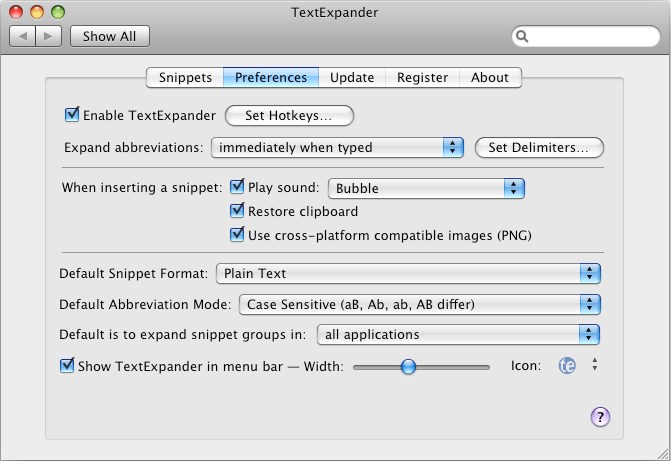
These scripts convert the case of copied text-so it’ll turn whateve you’ve copied to all lower case, all upper case, title case (every word capitalized), or sentence case (the first word of every sentence capitalized). I also use some snippets based on Perl scripts that I found on a blog called (Note that, for this to work, you should open TextExpander’s preferences and make sure the Default Snippet Format is set to Plain Text.) That pastes the copied text without any of its formatting. Then, after you’ve copied whatever text you want, you invoke that snippet (I use the shortcut :plain). But I learned a simple trick fromĭavid Sparks: You create a snippet consisting of just that %clipboard variable I mentioned earlier. There are plenty of tools built into various apps or third-party utilities that will do this paste-as-plain-text trick for you. Instead, I usually want to paste it as simple, plain text. If I just do the usual Command-C/Command-V, that text could be pasted with all of its Web formatting intact. So, for example, a lot of time I need to copy text from a webpage to another app. But, once again, TextExpander proves a handy tool for the job, in large part because it’s effective in any app you’re running. Again, there are lots of utilities that’ll help you do this. Some of the time that means futzing around with the formatting of text we’re copying from one place to another. 5) Manipulating textįinally, as I said before Macworld editors spend our work lives dealing mostly with text. You could do the same for any search operators you use most often. That then limits the Google search just to our site. But, because I use Chrome, with its unified search/address bar, I can instead just type whatever search term I’m looking for, followed by a TextExpander shortcut that inserts the Google operator site. I could navigate my browser to and use our own search tools. There are times when I want to find something on our site. One snippet I use multiple times a day: A Google search operator- site:-that searches.

So I made it into a TextExpander snippet. I only use it a couple of times a month, but I’d still hate to have to type it out every time.

For example: the body texts of email messages that I have to send a lot, things like assignments to writers, requests for paperwork, or in this case the email I send to our copy editors when I’m submitting an article. 2) Boilerplate textīeyond small snippets, I also use TextExpander to insert blocks of boilerplate text that I use a lot. So what I do is compose my email message, then at the bottom I type out the TextExpander shortcut for the email signature I want to use-in this case. I could use Mail’s built-in signature tools, but I find them clunky doing it with TextExpander is a lot easier. The first one is a classic application: Any little chunk of text you type a lot, things like phone numbers, email addresses, or in this case email signatures.įor example, I use a couple of different email signatures, depending on whom I’m mailing.


 0 kommentar(er)
0 kommentar(er)
